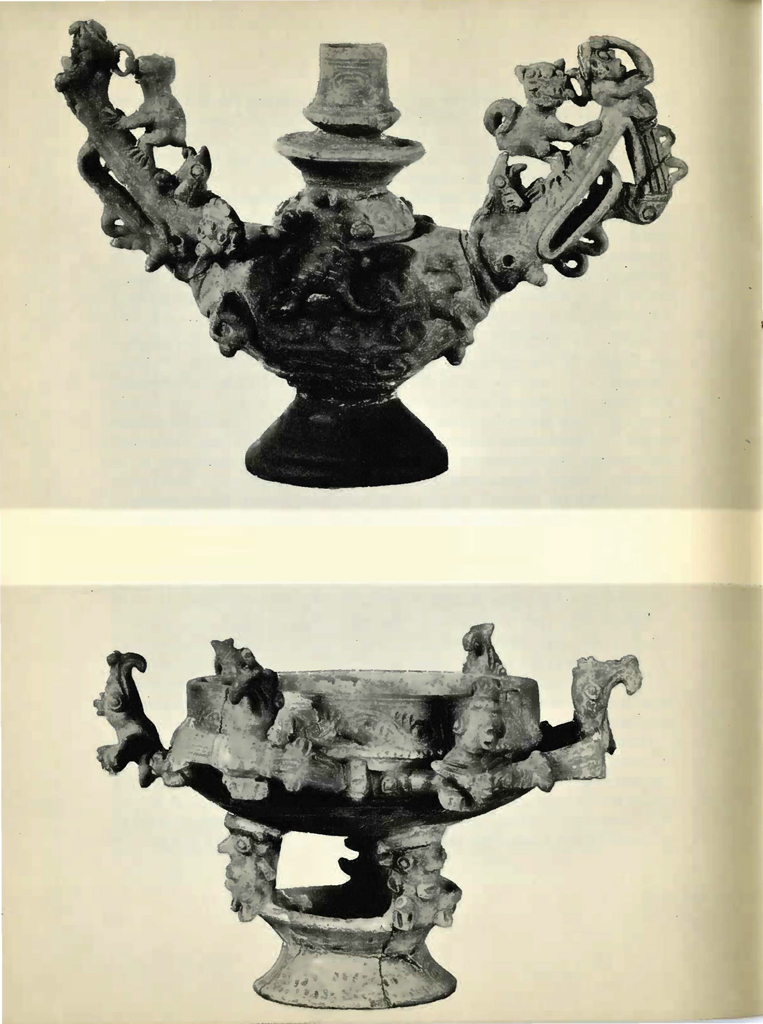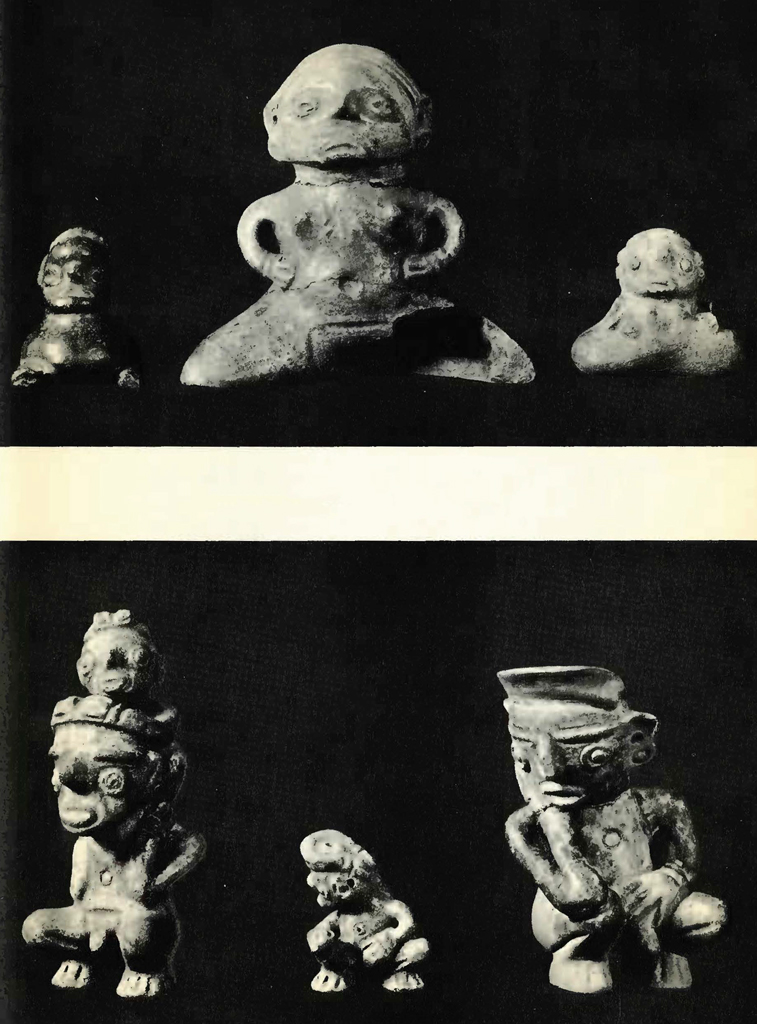DESPITE its immense extent, the Amazonian region is without doubt the the area least known in America from an archaeological point of view. The largely unexplored nature of this region, the sparsity of population, both native Indian and white, and the difficulties of transportation all make this unavoidable. Most museums, although possessing large collections from Mexico and Peru, have little or nothing from Amazonia, and most works upon the archaeology of America pass over the region as of slight importance artistically and scientifically. It was not expected that a region occupied by primitive savage hunters would produce anything worthy of notice.

Recently, however, it has come to be realized that the area is not only of importance from a scientific point of view as affording data upon the spread of influence and migrations between Peru, Colombia, Mexico and the Antilles, but also artistically inasmuch as the objects themselves are of considerable artistic merit. The University Museum has been one of the first recognizing these facts and in assembling objects from this region, The late Curator of the American Section, Dr. W. C. Farabee, excavated what is probably the largest extant collection from Marajo, the large island at the mouth of the Amazon, and in recent years several small collections have been received which were excavated around Santarem on the middle Amazon at the mouth of the Tapajoz River. Both of these regions are of deep fluvatile deposits and naturally the collections consist almost exclusively of pottery objects.
Of the people who lived in this region in pre-Columbian days we know nothing, not even the name of the tribe or the language that they spoke. The pottery objects are excavated, always in fragmentary form, from the sites of their villages. These are discovered when the rivers, wearing away their banks, disclose the broken pottery in pits near the surface.
The pottery of Santarem is characterized by an exuberance of high relief. This does not apply to all the pottery, for that intended for household use must have been plain, but such ordinary utilitarian utensils are usually ignored in unscientifically made excavations. The highly ornamented one, were probably made for funerary purposes. Even not all of this mortuary ware is decorated with high relief, but nevertheless vessels of the latter type are most characteristic of Santarem.
There are two principal types of this high relief ware. One is a vase with a flaring ring base and a constricted central vertical neck, both ornamented with incised geometric designs. From the body project two lateral wings, apparently always in the shape of crocodile or toucan heads, most frequently the former. These are stylized or conventionalized, but they are covered, especially in the case of crocodile heads, with smaller naturalistic figures of other animals. In the very ornate example shown the Plate II (above), at the end of the snout is a human figure with his hands raised to his forehead. Behind him is a jaguar, and at the base a bird. This complex probably represents some unknown mythological concept, or at least a religious one. In all of these vases a figure of a frog, or more probably a toad, in full round, is placed on the vessel between the lateral wings, and in this case a human head is seen to the left of each toad. There are many other decorative elements in relief and two horizontal perforations probably served as suspension holes.

Museum Object Numbers: 34-25-171
The other characteristic type isa caryatid vase. The base is an open ring in the shape of a spool or hour-glass, decorated with incised geometric designs. Upon this stand three human figures who support on their heads a broad bowl with its side also decorated with incised elements. Around the bottom of the decorated side is a band which bears figures of birds in full round. These seem to be toucans in the majority of cases. In the fine example figured herein (Plate II, below) there are six such birds, facing alternately inwards and outwards. Those facing inwards have their wings folded, but the wings of the outward facing ones are spread so that they serve as handles. In this type are four vertical perforations, probably for suspensions.
Large shallow trays also bear the same high relief. These generally have an outer and an inner rim, the two connected by loop handles which consist of, or bear, animal motives in high relief. There are also vases and bowls of other shapes, often with flaring ring bases and decorated with relief and incised designs. Some of these are very artistic and not so bizarre as the vases with the high animal relief. Frequently the rims are hollow and contained pellets so that the vessels rattled when lifted. Very large bowls are found which probably served to contain chicha or native beer. This was made from corn and probably by the process very common in Amazonia, of having women chew green or boiled corn and expectorate into the bowl. The mess was then diluted, the saliva aiding the fermentation.
Large effigy vessels in the form of human figures, men and women, are more unusual. These a.re painted, at least with a red slip, while the more characteristic high relief ware is never painted.
Among the most interesting objects are pottery human figurines. These are small and were painted, but the male and female figurines differ greatly in type. The latter, at any rate, are hollow and probably contained pellets so that they served as rattles. Presumably they represent idols rather than dolls. Those of women are stylized with the legs short, conical and outspread whereas those, of the men are much more naturalistic showing them in asymmetrical postures, generally squatting; one of those illustrated in Plate Ill bears a child on his back.
Certain elements of the pottery suggest resemblances to the culture of the West Indian Islands while other elements point towards the Isthmian region and Central America; other characteristics are found only in Amazonia.
J. A. M.

